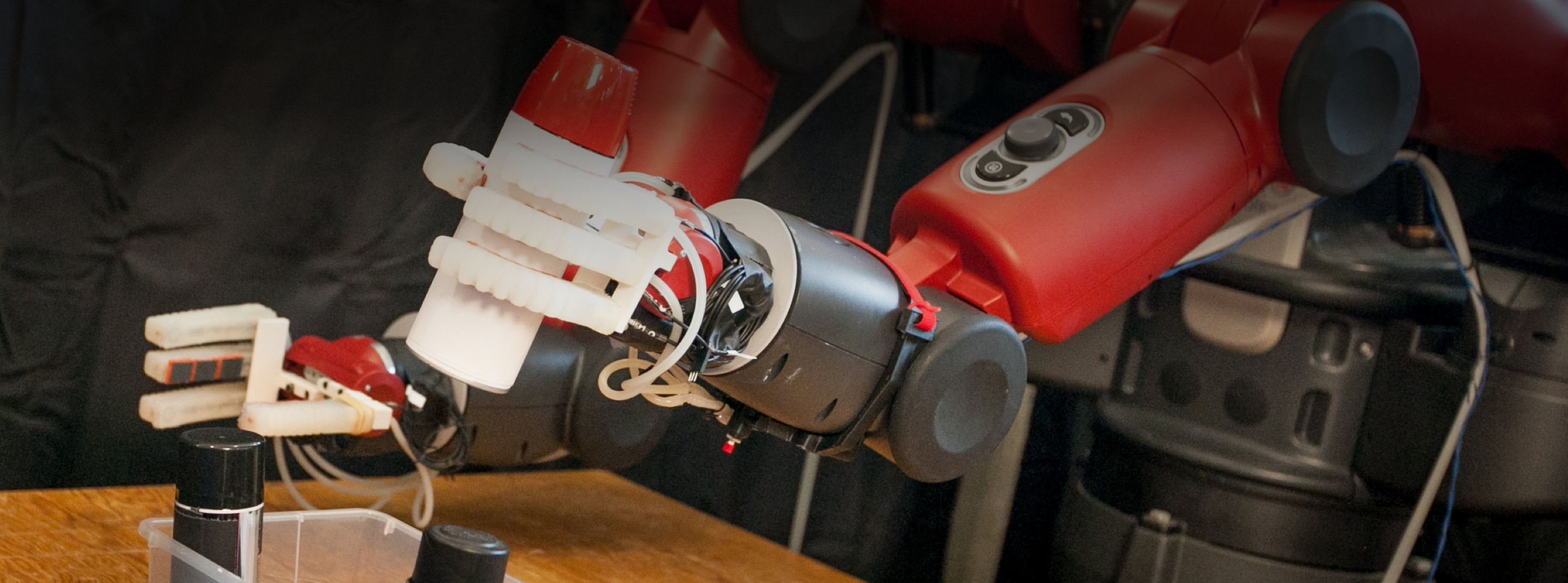Audrey Woods, MIT CSAIL Alliances | November 10, 2025
Imagine going to a stranger’s house anywhere in the world and, without asking questions, trying to make tea. Doing so requires more than the complex understanding of physics, common sense, tactile understanding, and the other motor skills we all take for granted every day. It’s also essential to understand the basics of different peoples’ homes, including kitchen organization, identifying tea vs spices, and types of cooking methods—electric kettle or gas stove? Most humans could figure it out with time and effort, although their tea might not be very good. But for current robotic technology, such a task would be almost impossible.
This is a “paradigmatic example” of the problem that MIT CSAIL Professor Leslie Kaelbling is trying to tackle in her Learning & Intelligent Systems research group. With a background in philosophy and a long-term perspective on the challenge of making machines that can approach the world the way humans do, Professor Kaelbling is combining various elements of computer science research to empower a future of capable, intelligent, and flexible robots.
MACHINES AND INTELLIGENCE: WHAT PHILOSOPHY & ROBOTICS HAVE IN COMMON
Professor Kaelbling describes her journey to robotics as “mostly accidental.” She had very little exposure to computer science before college and majored in philosophy. However, she explains, “there’s a part of philosophy that’s very mathematical and very connected to reasoning and language. It’s actually not that far from computer science.” Upon graduation, she got a job at SRI International in Silicon Valley, which at the time was starting to build robots. “It was really motivating for me to think about what you have to do to get a robot to do the kinds of things that a person can do. I’ve been doing that ever since.”
“My big focus is trying to understand what methods are good in which ways and how we can put them together.” Professor Kaelbling is skeptical of the trendy idea that there will be one trick, model, or method that will “solve the whole problem” and believes a more piecemeal approach will be required to create intelligent machines. “My view is that there’s design work to be done inspired by nature and humans. Human brains are not uniform in their computational style. Different parts are wired up in different ways and they do different things. In an artificial system, that’s probably going to be true as well.”
Think, for instance, about a robot butler. This would have to be a very general-purpose robot that could operate in any given household, as with the tea example above. A user could talk to it, instruct it, and it would automatically figure out what to do. “The question is: how do you design that?” This is no easy feat, as it requires answering deep questions about how knowledge is stored, what happens when something goes wrong, and understanding the tradeoffs of different computational methods. “Some kinds of representations give you more efficiency. Some are easier to learn. Some are more robust in the face of errors.” A future robotic butler might, for instance, leverage the current reasoning intelligence of Large Language Models (LLMs) like ChatGPT, as one of her students did when it asked ChatGPT to lay out the steps to make soup in her kitchen and then used those steps on a model robot in a model kitchen. “By reasoning about the robot's own abilities in the physical situation, we could take an abstract plan—which the LLM gives us—and turn it into something quite concrete and actually executable.” This project showed that robotics researchers already have some tools—like LLMs—which are really good at aspects of understanding and other tools which might address issues like tactile sensing or navigating uncertain environments. “Now we have to understand how to best make them work together.”
Fundamentally, Professor Kaelbling is trying to replicate sentience, and in this her philosophy background is surprisingly useful. “One fundamental view I have is that there is an external physical world around me, and that if I can understand the world in those terms and if my robot can understand the world in those terms, then it will make some decision-making and machine learning processes easier.” She explains that in robotics work, there’s often the tendency to “operate at a more behaviorist level,” which conceptualizes robotic intelligence as taking in images as input and producing motor torque instructions for the robots as output. In this view, “it’s not the engineer’s place to think about the degree to which there’s some processing inside that reflects physical reality.”
But Professor Kaelbling believes that building internal, intelligent models based on the physical world will actually make some robotics problems easier. “If you think about the physical world we live in, it has a bunch of regularities that are really important. Gravity points down, matter tends to clump together, and people talk to each other in certain ways. If you approach the problem of AI as a computer scientist, or as a very complicated computational problem you have to solve, it can be unthinkably hard. But if it only has to work in this world, then this world has special properties and constraints that let us make certain kinds of assumptions and approximations and simplifications.”
The robots that Professor Kaelbling imagines—flexible, adaptable, intelligent, robust—might be many years away, but she believes in the importance of long-term vision in this area and will continue to chip away at the challenges and questions that will one day bring her vision to life.
WORKING WITH INDUSTRY: VISITING RESEARCHERS & REASONS TO COLLABORATE
Even though Professor Kaelbling loves the creative exploration of academia, she sees great utility in working with industry and learning more about the specific hurdles they face. “Thinking about the concrete problems that come up in industrial applications can really help people who are thinking about general-purpose AI.” While she doesn’t expect the methods she works on to help with, say, Amazon’s supply chain issues, “problems like how do you pick things out of a bin at Amazon or how you rearrange the packages in the back of a UPS truck are great inspiration for students to work on because they’re really sub-problems of leading a normal human life.”
For that reason, she acknowledges how useful it can be to have industry visitors in her lab. “That’s one of the best ways to make something good happen between academia and industry, because it takes several meetings before you can even speak and understand each other’s terms. I think academics can learn from industry people about some tasty problems that really matter, and they won’t be the same as the ones academics think of by sitting in their chair and imagining what a problem would be like.”
On the other hand, it’s also useful for industry players to get “a very honest view of how well the things that researchers are working on really do work.” She jokes, “don’t believe every video you see,” because many robots today aren’t conceptualized with the strict parameters of industry in mind. “People are making things that work 30% of the time, and that’s on a good day.” But that’s exactly why it’s so critical for industry to understand the realistic timeline of robotics research and for robotics researchers to “actually listen more carefully to the needs and use cases of industry people. You can't have industry just tell academia what they need, because the industry people won't be imaginative enough about what the academics could do. And you don't want the academics to tell the industry people anything, because they will have made a thousand bad assumptions about the industrial setting. So figuring out ways to get people to talk is really important.”
At the end of the day, Professor Kaelbling enjoys the technical aspects of her work the most. “I do a lot of hacking code and sitting on the floor debugging robots. That’s always what I’ve found to be fun and still keeps me going.” To companies looking to get involved in her work, she invites “people looking for general robots to work in unstructured situations.” Flexible automation in surprising or unreliable circumstances with a multi-year horizon is “exactly the kind of niche I would be interested in.”
Learn more about Professor Kaelbling on her website or CSAIL Page.




